#clerics
Note
Can you go over what is going on with Paladins and Clerics in DND, not from a mechanical or in universe perspective, but from what different sources/genres/tropes they are drawing on? They always seemed to have too much overlap in the basic concept to me to make sense as separate things in the dnd classes/stock character line up.
Clerics originated way back in the pre-OD&D days, when the game that would become Dungeons & Dragons was still a fantasy roleplaying add-on intended to be paired with your favourite historical wargame. One of the players in Dave Arneson's original Blackmoor campaign had an army whose commander/player character was a vampire named Sir Fang, who proved to be sufficiently overpowered that a mechanical "hard counter" was desired.
This ended up taking the form of a vampire-hunting priest character heavily inspired by Peter Cushing's turn as Abraham Van Helsing in the 1958 Christopher Lee adaptation of Bram Stoker's Dracula; that vampire-hunting priest in turn developed into what would become one of original flavour D&D's three core classes (the other two being the fighter and the wizard – the thief/rogue came later).
The paladin, meanwhile, was originally a direct, 1:1 lift of Holger Carlsen, the protagonist of Poul Anderson's 1961 fantasy novel Three Hearts and Three Lions, and was introduced as a subclass of the fighter – rather than a class of its own – in the 1975 Greyhawk supplement. Over the game's editions it's wandered from being a fighter subclass, to being a high-level "advanced class" to which qualifying characters can switch at 10th level, back to being a fighter subclass, and finally to a core class, where it's generally remained.
So, in short, the cleric was originally a purpose-built hard counter to vampire PCs loosely patterned after Peter Cushing's Abraham Van Helsing, while the paladin was originally for people who just really wanted to be one specific Poul Anderson character.
(I'm sorry if that's not a terribly satisfying answer, but you need to understand that practically everything in old-school D&D is a 1960s or 1970s pop culture reference – it just doesn't read that way to modern audiences because nobody gets the memes anymore.)
2K notes
·
View notes
Text
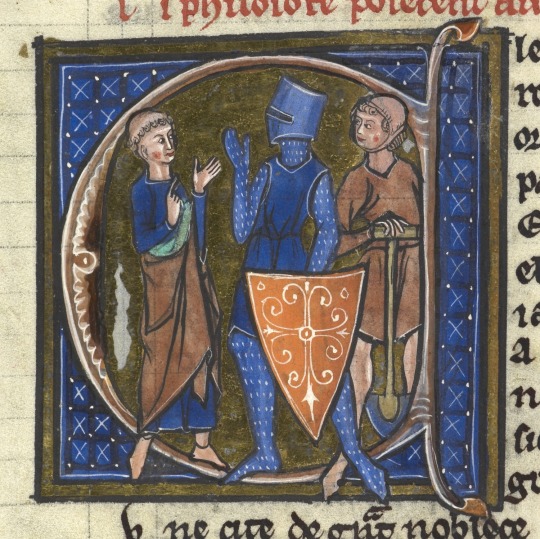

"Cleric, Knight, and Peasant representing the three classes", from Li Livres dou Santé
The tripartite social order of the Middle Ages: the ōrātōrēs (those who pray – clerics), bellātōrēs (those who fight – knights, that is, the nobility), and labōrātōrēs (those who work – peasants and members of the lower middle class).
#medieval#middle ages#manuscript#art#cleric#clergy#knight#nobility#peasant#workman#europe#european#history#knights#illustration#clerics#peasants#french#france
246 notes
·
View notes
Text
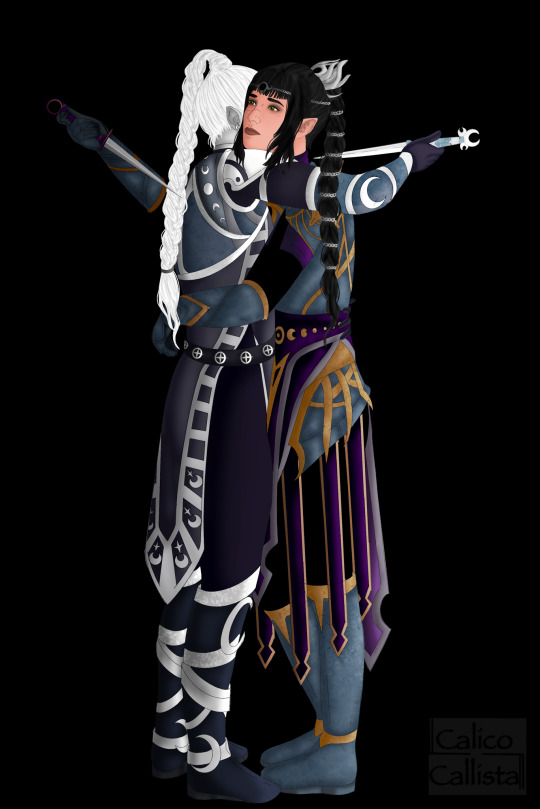

“My Lady and your moonwitch are at war, so naturally we’re enemies… but enemies with a common purpose. For now.”
So not over the Shadowheart and Selûnite cleric romance-
#bg3#baldurs gate 3#shadowheart#jenevelle hallowleaf#Tav#Calanthe Esmeray#tav x shadowheart#Shadowheart x Tav#Shadowheart x selunite cleric#selunite cleric x shadowheart#half elf#half drow#shar#selûne#DnD#clerics#enemies to lovers#selunite cleric
73 notes
·
View notes
Text
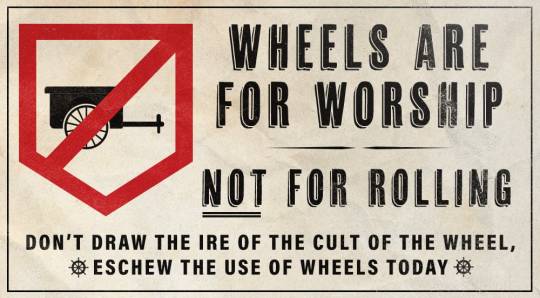
From today's Cities of Sigmar article (Hammerhal Herald)
One of the weirder "Legitimate" Sigmar Cults, the Cult of the Wheel worship Wheels as a symbol of cycles and unbroken power. They forbid the use of wheels being rolled through mud and the like, for instance.
They are led by this woman.

75 notes
·
View notes
Text

Templars, clerics of Athas (Ral Partha AD&D 2e Dark Sun miniatures by Sandra Garrity, 1992)
#D&D#Sandra Garrity#Dark Sun#Ral Partha#dnd#D&D miniatures#templars#clerics#Athas#fantasy miniatures#cleric#Dungeons & Dragons#AD&D 2e#D&D 2e#Dungeons and Dragons#1990s
155 notes
·
View notes
Text
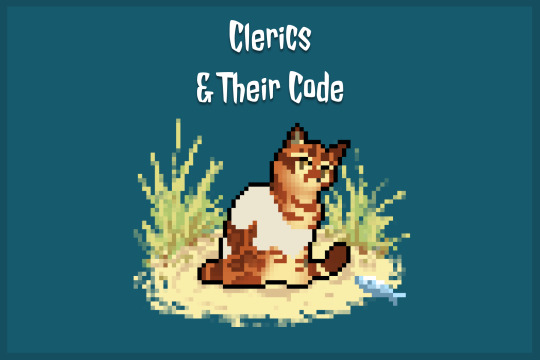
[Image ID: the title of the article is "Clerics & Their Code". Fennelspot sits underneath the words.]
A two-for-one deal, since the cleric description and the code of clerics option both won in the last lore vote. Today we'll be looking at the two main responsibilities of a cleric and the unique set of restrictions that bind them.
Clerics: Healing
The main job of a cleric, the one which most cats can relate to, is to heal sick and injured Clanmates. Their medicine dens are not only places for recovering cats to sleep but act as important stores for medicinal liquids, powders, and other concoctions. Clerics are very picky about who can meddle in their stores, but there are multiple roles that need access to the medicinal goods. Artisans trade certain medicines with other Clans. Mediators sometimes need herbal remedies for the mental afflictions of the Clan. Historians often learn about medicine in their studies. Meanwhile, caretakers and warriors often assist in collecting herbs and turning them into medicine. Other cats can all be recruited to help clerics in times of crisis when they need more paws caring for injuries or are too sick to care for others themselves.
Cleric medicine is a complex enough topic that a cleric spends most of their life devoted to the subject. It's not just about collecting the right leaves and stuffing them onto wounds. In this world, clerics have a wider range of medicinal technology. They harvest herbs and transform them into some of the following;
Infused oils: While WheatClan is the only Clan that produces the ever-useful flaxseed oil, which they trade for use in both food and medicine, clerics and artisans can make a simpler, cruder oil from animal fat (the finished product isn't considered "oil", however, due to its differences from flaxseed oil). Clerics infuse this oil with herbs by mixing the two in one pot, then setting it inside a bigger pot with some water over a fire (clerics have their own fireplace/oven setup that is only used for medicine). The water around the smaller pot infuses the herbs into the oil over the course of an hour. When it's done, they strain the herbs out of the oil and keep the finished product.
Salves/Balms/Ointments: Clerics mix their infused oil with a strong wax (beeswax or tallow) to create a stronger variation of a traditional chewed poultice (although they may add some solid herbs to the finished product). Ointments involve the use of water and are better for skin/fur issues than the stiffer salves and balms.
Concoctions: This includes adding herbs to food for medicinal benefits, boiling herbs for decoctions, mixing herbs with honey, and otherwise mashing them together.
Clerics also use the herbs as we are traditionally familiar with, having patients chew them or eat them whole. A cleric's job also involves a series of non-herbal strategies, which includes the use of leeches, exercise, grooming, rituals to StarClan, and more. Notably, while cobwebs are a great emergency bandage, artisans can craft actual bandages from animal skin and plant fiber. Some of these bandages can be washed out and reused.
Clerics: Connection To StarClan
The other major job of a cleric is to maintain a connection to StarClan and advise their Clan on the opinions and advice of their ancestors. If a StarClan cat needs to speak to a living cat, they will usually go for the cleric. Oftentimes, StarClan only has the strength and knowledge to send vague signs and omens which clerics are trained to identify and interpret. They visit StarClan's Shrine on the half-moon preceding the Gathering in order to reconnect with the ancestors and get more clear-cut advice (while also connecting with fellow clerics on spiritual/medical matters).
Clerics have a wide range of rituals designed to bring strength from StarClan. They can also summon StarClan spirits through a special ritual (which I will explain another time). They can even perform a variant of it to speak to a Dark Forest cat, but this is seen as taboo and would earn ire from StarClan's Judges.
The Code of Clerics Origins: The First Cleric
The first cleric in the impressive records all historians work hard to maintain was known as Hickoryroot. A lot of her story sounds like myth at this point, but historians have worked hard to keep it as true as they could.
It is said she was a SlugClan warrior from the days where roles were not split as they are in the modern Clans. It is said that she learned some of the first medicines from watching a human (a Native American, possibly East Cree) gather herbs and turn them into a medicine for a wounded friend. The stars saw her experimentation and provided the herbs she needed to establish the foundations of Clan medicine. This provincial relationship made the role of the cleric forever connected to StarClan.
The process of preparing medicine was so time consuming that Hickoryroot had no time to help with hunting, kit care, or the other duties of a warrior. As such, the Clans decided her role would be distinct from the others. She would work under a different set of rules. With that, the Code of Clerics began to grow.
The Decrees within the Code of Clerics
A cleric's job is to care for the health of their Clan and connect the worlds of the living and dead. As such, they are not expected to help in other duties in the same way as most of the other roles. In fact, it is the duty of the Clan to support the cleric in whatever they need. They need more bandages? Artisans will make more bandages. They need extra paws to harvest herbs? Caretakers will join them and care for their herb patches/gardens for them. The Clan will protect and feed the cleric so all they have to worry about is their job.
It is forbidden to endanger, harm, or disrupt the work of a cleric. StarClan helps them heal their Clanmates and guide the Clans as a whole. Since clerics are forbidden from combat, to attack one is sacrilegious and will send a cat to trial. Only StarClan can order a cleric not to heal someone in need. If a cleric decides they need to help, no one can stop them.
Hickoryroot established this practice as a social custom, but it was later solidified as code that clerics cannot take a mate or have kits, even as an honor sire. It's not that a cleric would be distracted by their family (they have friends, siblings, and parents, after all), but rather that a cleric is a servant of StarClan and has an elevated position over other cats. They cannot take a mate in an equal relationship and they cannot take the guiding role of a parent without diluting their spiritual connections. It should be noted, however, that this aspect of the code is only a tradition in RippleClan, not a decree. Clerics in RippleClan are allowed to pursue relationships. Whether Fennelspot will take a mate one day remains to be seen...
28 notes
·
View notes
Text

Emiri and Shadowheart are such a shield wall.

20 notes
·
View notes
Text
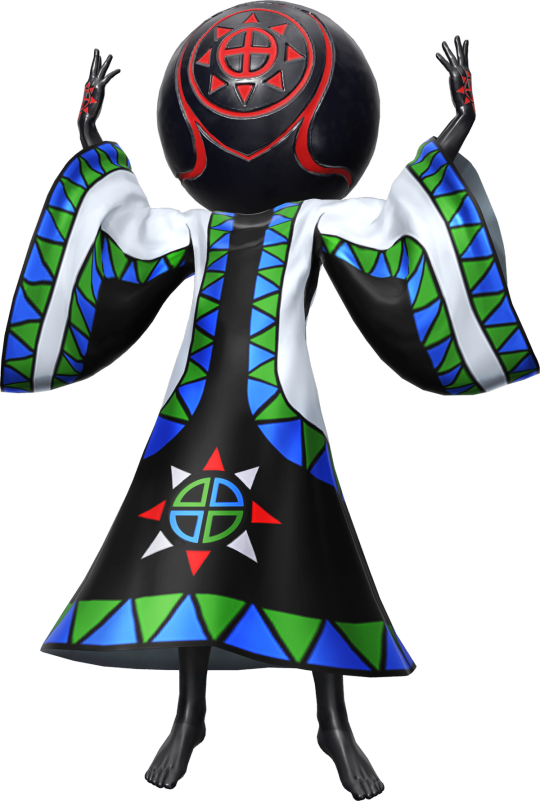
Encounter: the Orb Pope
112 notes
·
View notes
Text

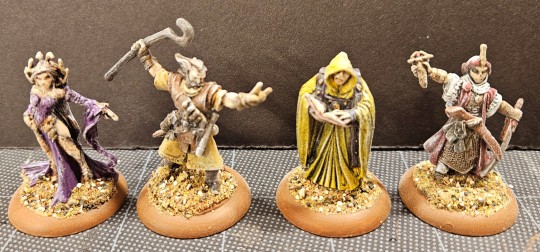
#6 on the list of 10 D&D Minis that every group should have is spellcasters! These are all Reaper Bones minis from the 2012 Kickstarter, I use Bones minis as testing grounds for different paint techniques and different color combinations. One of the things I'm currently working on is dry brush highlights that don't wipe out the detail, I'm trying to train my hand and my eye and I find the best way to do that is lots of practice. Cheap minis are very handy for this purpose.
#painting miniatures#miniature painting#reaperminis#bones#d+d#spellcasters#magic-users#wizards#clerics#sorcerers
13 notes
·
View notes
Text

Runningnose, cleric of ShadowClan.
#runningnose#the prophecies begin#the new prophecy#yellowfang's secret#warriors#warrior cats#wc#warriors designs#shadowclan#medicine cats#clerics#stealing the term cleric from bonefall cause its just so much better#canon#razorverse#look. this guy's nose is clogged all the time. i think he should look like he got hit by a truck#maybe its bc i dont get sick often but when i do i am the most miserable being ever and doing anything is like pulling teeth#but this guy just lives like that. among the Other Horrors#i used to not like his scenes actually cause id imagine his pov and get kinda grossed out tbh sdklfdsf#anyways yeah i imagine him to be constantly groggy and out of it and exhausted. and therefore easy to manipulate#kinda imagine hes sticky too
17 notes
·
View notes
Text
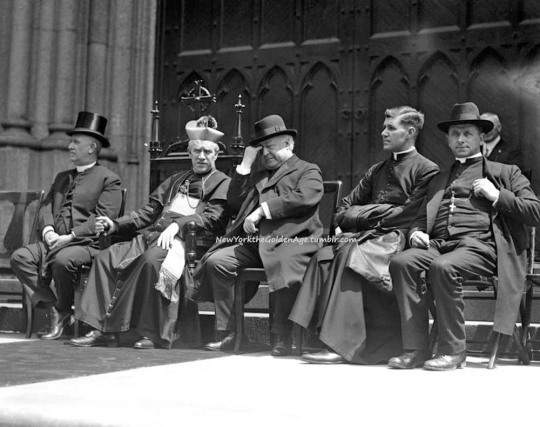
The Archbishop and a bishop of the Archdiocese of New York, joined by other members of the clergy, enjoy the St. Patrick's Day Parade from seats outside of St. Patrick's Cathedral, 1924.
Photo: NY Daily News
#vintage New York#1920s#St. Patrick's Cathedral#clergy#clergymen#bishop#archbishop#clerics#parade#St. Patrick's Day Parade#parade watchers
69 notes
·
View notes
Text
Staying up past my bedtime to note that one of my newest dnd characters has acquired a pet rat (gender unknown, referred to only as Cookie the Triumphant) and this is singlehandedly the best thing I have ever accomplished in a dnd campaign ever except maybe convincing a DM to let me keep a crab as a pet by carrying it around in a self water style baby Bjorn.
#dnd#dnd ocs#dnd shenanigans#dnd stuff#rats#rats of tumblr#pet rats#ratposting#rat love#dungeons and dumbasses#clerics#fighters#dnd familiar
29 notes
·
View notes
Text
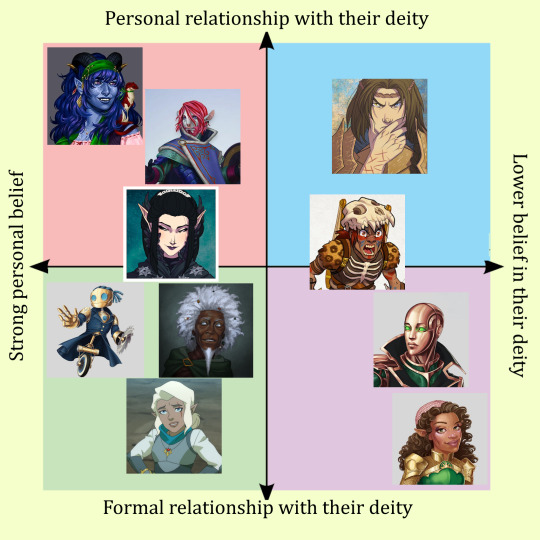
I've been thinking about Critical role clerics a lot recently. I don't know how accurate this is but it seems right to me, feel free to disagree, though.
#jester lavorre#caduceus clay#fresh cut grass#pike trickfoot#kashaw vesh#lieve'tel toluse#shakäste#critical role frida#deanna leimert#macaroni samsonite#clerics#i went with vibes for the two oneshot characters
29 notes
·
View notes
Text
There is something uniquely satisfying about delivering the coup de grace to an undead enemy with Toll the Dead. I mean, there’s something uniquely satisfying about finishing any enemy with Toll the Dead. “The bell tolls, bitch!” But on an undead it’s extra satisfying, because you climbed your way out of that grave but now it’s clawing you right back in again. You can only cheat death for so long, honey. Sooner or later that temple bell tolls you right back down.
(I’m playing a knowledge cleric, not a grave cleric, but it just feels nicely emphatic anyway. I’m playing a knowledge cleric of Deneir. The scribe god. Whose priests are supposed to be wandering freelance postmen and scribes, not exactly undead executioners over here. But she’s a shifter, and she felt literacy should be brought to the wilderness, so she multiclassed ranger, and I think she sort of took the oath of charity Deneir’s clergy take, to spread reading and knowledge and write letters for people for free, as more of a general ‘do good recklessly’ sort of injunction? So if someone asks for any sort of help, writing related or no, she’s just sort of ‘yeah sure’. She’s documenting it! Anything she does, anything she finds, the stories of the undead, she’s writing all of that down! She’s got a journal and everything. So she’s still doing her bit for the collection and spread of knowledge, absolutely.
Just, you know. Sometimes you also gotta Toll the Dead an undead knight or an abyssal spectre? She’s kinda becoming more of a Fallout: New Vegas sort of postwoman. She’s a little rat-shifter scribe with a +1 longbow and a dolorous bell to sound your belated death knell. She blows all her loot on books and a helm of comprehend languages (literally, that’s what she spent the reward money on. Well, those and a breastplate). I adore her. She’s going to get herself killed so quickly. And then she’s going to arrive in the afterlife and Deneir’s just going to be sitting there, holding up her journal in one hand and giving her the mute side-eye. But hey. She wrote it down! So that’s the job done, right?)
Anyway. Toll the Dead is just a really satisfying cantrip. The bell tolls, bitch. I know what god I’m meeting. Do you?
Now excuse me while I go get my frontier scribe messily killed. Heh.
24 notes
·
View notes
Text


Characters.
49 notes
·
View notes
Text
Question for D&D players/DMs who use Greek gods as a source of divinity for clerics to gain their powers from:
When someone makes a cleric with Persephone as their goddess, are they a nature cleric due to her spring connections, or a death cleric due to her being the queen of the Underworld?
#personally i'd go for grave domain with her#since i interpret her as a goddess of the cycle of life and death#d&d#dnd#greek mythology#persephone#clerics
8 notes
·
View notes